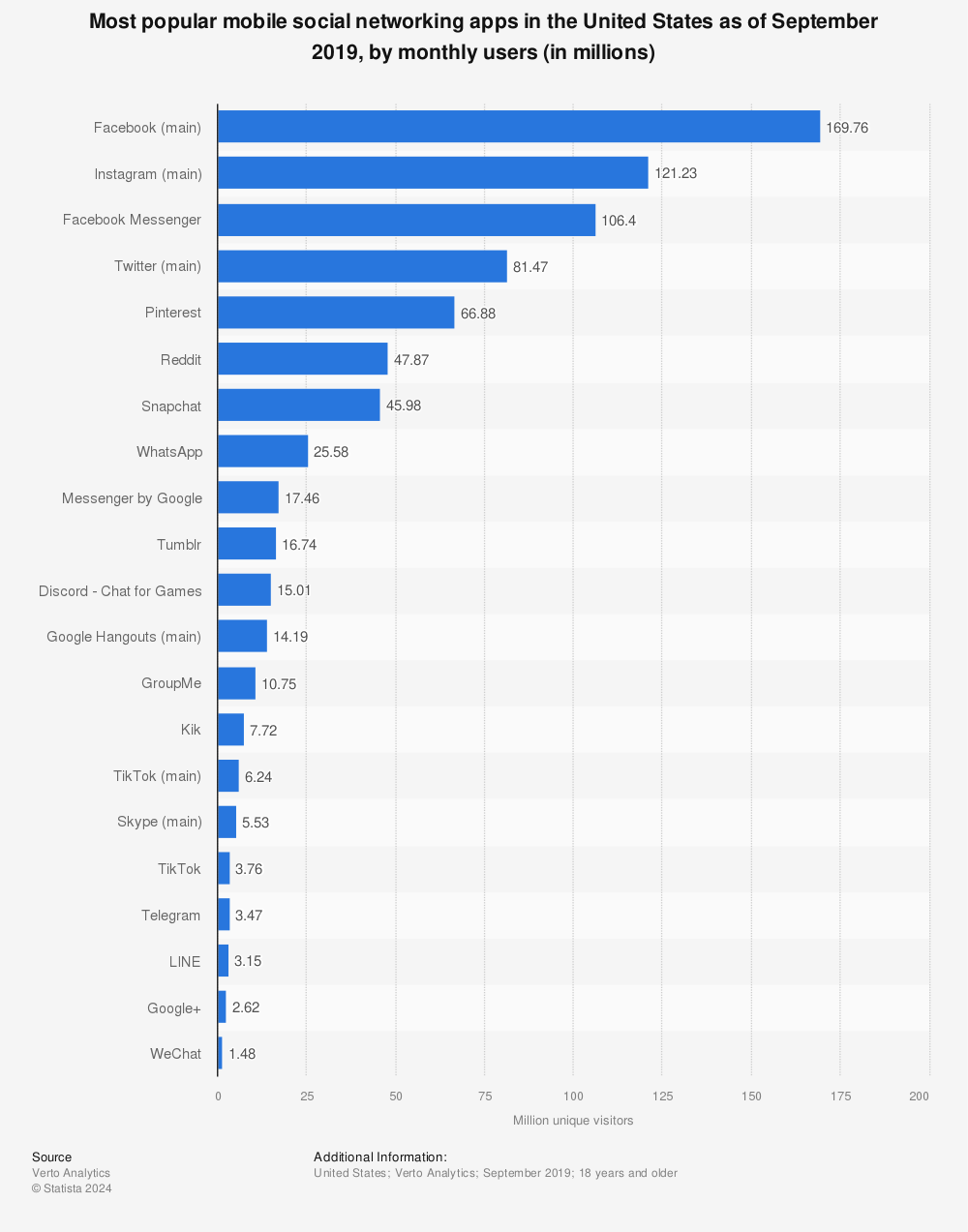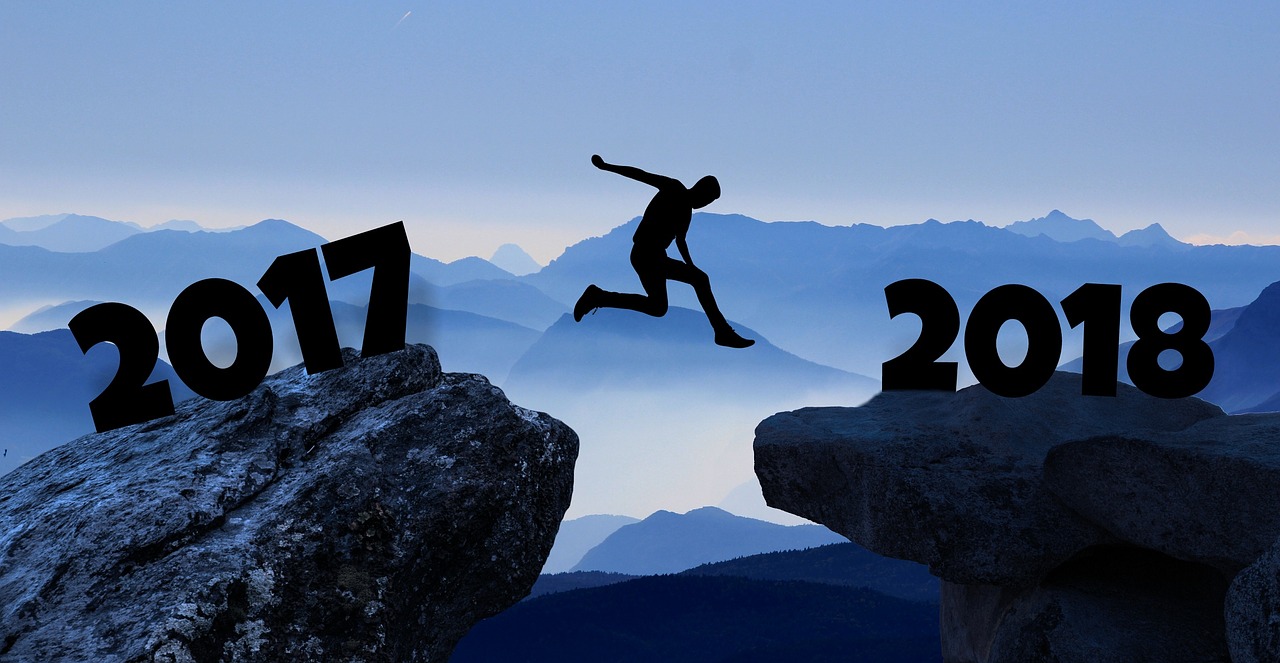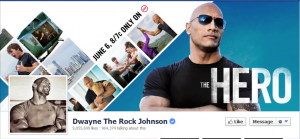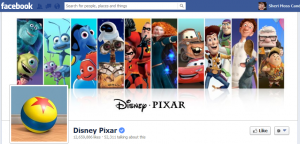
Social Media Update 2020
by Sheri Candler
Every year, I compile a presentation for the TFC all-staff meeting to inform the group on what the latest social media trends are, what changes have recently taken place and what may be to come on the major social media platforms. This post will share the insights I gathered with that might benefit filmmakers in the coming year.
General Social Media Trends
- People’s attention spans are short and the way they like to consume content has also changed. Content formats like Stories have become popular. They are short, engaging, and addictive in a way that people can spend hours scrolling through one Story after another. Facebook forecasts that sharing to Stories will surpass sharing to Feeds at some point in the coming year. Consider creating a 15 seconds vertical video as one of your trailers.
- 1 out of every 4 Facebook Pages now use paid advertising as part of their social media strategy and Facebook accounts for 23% of total U.S. digital ad spending. If you’re trying to grow an audience via Facebook and Instagram, budget will be needed for paid social media placement.
- 4 in 10 consumers say they are unlikely to become emotionally attached to a brand unless they are interacting via social media, but those interactions need to be authentic and personalized. This means refrain from only posting about your projects and really try to relate, on a personal level, to your audience.
- Most popular mobile social networking apps in the United States as of September 2019, by monthly users (in millions). Facebook is still tops when it comes to users.

- Approximately 223 million Americans use social media in 2019. This is a slight increase over 2018, and a slight decrease compared to 2017. Overall, however, social media usage is essentially unchanged over the past four years. The ONLY social network growing among young Americans is Instagram, up from 64% to 66% in the past two years. Social networks in 2019 are now nearly as likely to be utilized by people 35-54 years old, than those younger, which is good news for theatrical campaigns and documentary makers.

Social Media Usage: Total U.S. Population, from 2008 to 2019
- Facebook is actually less popular now than it was four years ago. But it is still at the top of the list for daily users.
The only demographic group that is using Facebook more than in prior years are Americans 55+. - The average monthly change in page likes is just 0.13% Building your Facebook audience is definitely a slow and steady game.
The average organic reach for a Facebook post is 5.5%. Take the number of fans on your page and multiply it by 5.5% to see if you are reaching the average per post. If you are not, then re-evaluate what you are posting. - 60% of Americans who watch digital video do so on Facebook and the average engagement rate for Facebook video posts is 6.13%
Among U.S. adults who use Facebook, around three-quarters (74%) visit the site at least once a day. - Facebook has eliminated Post Scheduling for pages on DESKTOP. To access this function, you need to use Creators Studio or third-party scheduling tools like Hootsuite.
- Groups are booming on Facebook. They’re pretty much the platform’s most popular feature, and engagement in groups is skyrocketing.
- A change in Reach calculations. More on that here.
- New Creators Studio insights called Traffic Source. More on that here .
- Twitter’s U.S. user base is predicted to grow 0.3% in 2020.
- Only 20% of Twitter’s daily users are American.
- Compared to other age groups, Gen Z is most likely to be using Twitter. (By comparison, only 26% of 30- to 49-year-olds use Twitter.) That said, Gen Z is still much more likely to be using YouTube, Instagram, Snapchat and Facebook. 65% of Twitter’s top 10% of users (by tweet volume) identify as women. And 69% of this group say they tweet about politics, and identify as Democrats.
- Tweets with hashtags get 100% more engagement, but only 1 or 2 hashtags.
- 93% of video views on Twitter happen on mobile so be sure to use mobile-optimized video that has subtitles or captions for sound-off viewing.
- No political advertising. Political ads are defined as content that references a candidate, political party, elected or appointed government official, election, referendum, ballot measure, legislation, regulation, directive, or judicial outcome. Ads that contain references to political content, including appeals for votes, solicitations of financial support, and advocacy for or against any of the above-listed types of political content, are prohibited under this policy.
- Redesign of the Twitter layout on desktop happened in summer 2019.
- Twitter lets you add a photo, video or gif to a Retweet. Read more about this here.
- 2 rumored changes that could be coming in 2020. The ability to prevent other users from mentioning you without your permission and ability to disable a retweet on your tweet.
- 1 billion people use Instagram every month, though only 110 million are located in the United States.
- Instagram is the most popular traditional social network among U.S. teens 13-17yrs. Only YouTube is more popular with teens. 72% of U.S. teens say they use Instagram, compared to 69% for Snapchat and 51% for Facebook.
- The gender mix on Instagram is pretty even: 52% female and 48% male.
- In case you were thinking of hiring an influencer to help with an Instagram campaign, brands pay Instagram influencers between $100 and $2,085 per post. For videos, they pay between $114 and $3,138, and for Stories they pay between $43 and $721.
- Brands post an average of 2.5 Stories per week.
- Instagram is now hiding Likes on mobile devices for US accounts after testing in several other countries. Facebook may soon start hiding likes, too. Likes can still be seen on desktop.
- Donation stickers available on IG. Instagram launched donation stickers for Stories back in May, giving accounts the capacity to raise money for non-profit groups via the option. A non profit must be registered on Facebook first in order to have this capability.
- IGTV now supports Landscape Videos, though it is up to the user to actually turn the phone to watch them. Most people watch their IG feed in vertical position so uploading a landscape video is asking to go against consumer habits.
- It is recommended to use Facebook Creators Studio on desktop to manage a brand Instagram account because it gives access to scheduling posts and expanded metrics.
Sources: https://www.convinceandconvert.com/social-media-research/social-media-usage-statistics
https://blog.hootsuite.com/facebook-statistics/#business https://www.pewresearch.org/fact-tank/2019/05/16/facts-about-americans-and-facebook
Recent changes that affect Facebook Pages
Source: https://blog.hootsuite.com/twitter-statistics
Recent changes that affect Twitter
Instagram.
Source: https://blog.hootsuite.com/instagram-statistics
Recent changes that affect Instagram
A word about TikTok
For those who do not have teenagers in your life, TikTok is a video sharing platform where short updates, typically accompanied by music, are shared publicly. This is one of the fastest-growing social platforms and forecasted to continue to grow by leaps and bounds in 2020, but be cautious with any platform championed by teens. The very young are quite fickle and meteoric rise is frequently countered with equally quick crashes as the party moves to the next shiny thing. For a look at brands killing it on TikTok, read more here.
`
Sheri Candler February 21st, 2020
Posted In: Facebook, Instagram, Marketing, Social Network Marketing, technology, Twitter
Tags: Facebook, social media, social media for filmmakers, social media tools, Twitter
How Should Filmmakers Use Social Media in 2018?
Updated January 25, 2018 to take into consideration changes announced for Facebook and Instagram.
As 2017 winds to a close, I wanted to take some time to evaluate what I’ve learned in the social media space this year, both in my work with independent filmmakers and working for public media.
Between those two endeavors, I have helped to create, test and connect audiences to over 350 short videos made specifically for social media. The vast majority of those were less than one minute in length, included captions burned into each video, and used a paid social approach to ensure that the videos were seen by a highly targeted audience who would be most likely to share them.
Here are the main things I want to share with you as you contemplate your use of social media in 2018:
-
- Cardinal rule on social: The content you post must be interesting and relevant to motivate a reaction from the viewer. Boring links, boring videos, boring images, boring calls to action that clearly only benefit you WILL BE IGNORED [and will be demoted in the newsfeed by Facebook algorithm]. The organic videos that performed the best for me were a story in themselves. They weren’t trailers, they weren’t promo videos, they didn’t often include a call to action on the video, and they weren’t random behind the scenes footage. The stories took one main idea and presented it first, then explained the idea, then sometimes ended with a question to encourage people to comment. The more shares and comments the videos received, the more views it got. But why am I mainly talking about videos? Because…
- By 2021, 82% of global internet traffic will be attributed to video. As more and more newsfeeds are filled with short video content, your account will need to compete. You’re a filmmaker so generating quality video content should be easy for you. But remember, 90% of the videos people see in their feeds are watched with the sound off. Better to make a video that is not audio driven, but rather driven by images that can tell a story on its own. Also, it is best to present these videos in a square format, rather than in a horizontal rectangle. As most people now access social media platforms via their mobile devices, a square video (1:1) fills the screen and gives a much richer experience. Widescreen videos are crunched and make captions difficult to read. See good examples here and here.

- Facebook Live, Instagram Live, Live Story for Snapchat, Periscope for Twitter, Youtube Live. Live or near live experiences will continue to proliferate on social. Some of this may be ephemeral content, that lives for only 24 hours. If you have an exciting event happening or you have access to a person with a large following, you should be utilizing live sessions on social media. Facebook, in particular, will be highlighting videos that receive lengthy interaction in the comment section. If you want to see a comparison between Youtube Live and Facebook Live, CLICK HERE.
- Influencer marketing is a thing, but it isn’t free. It is awesome to think that if you tag a celebrity, they will share your tweet, but the real impact comes from those who have an engaged following instead of a vague, large number. Look toward influencers that have a niche following and are more willing to get excited about your project than a tweet from a celeb who has little connection to your project. Another idea could be to utilize influencers as social media content creators for your project. Rather than hoping to access their network, perhaps you can pay them to create for yours. Be advised, the Federal Trade Commission is now cracking down on sponsored posts that do not publicly disclose a paid sponsorship arrangement. It is better to work with companies that specialize in bringing influencers and brands together, like MediaKix Mostly Sunny and Heartbeat as they are usually up to date on the regulations and how to negotiate deals. For an idea on pricing for working with influencers, see this Digiday report.
- Facebook organic posting is nearly dead. If you are still posting links, photos and videos that do not regularly receive multiple comments, you can stop. The company has just announced that it will stop showing posts by brands and publishers if those posts are not inspiring conversation (comments) as their new focus is on bringing people together, not pushing traffic and views. Facebook is not interested in sending traffic to other websites or providing a passive viewing experience (such as video views with no comments). This change will really hit pages that have not been inspiring conversation in their comment sections. However, don’t ask for comments in your posts. Engagement bait will be demoted in the newsfeed. This change will not affect paid promotion.
- Which means that you MUST invest in social advertising. Yes, you could boosts your organic posts, but you really should be set up on Facebook Business Manager and running campaigns through Ad Manager. You need a monthly budget to spend. Anyone who has tried to build up a following or reach their following on social will know the time of reliable, free, organic reach has passed, and it isn’t going to return since social media platforms have shareholders who want to see revenue. The good news is this allows for smarter advertising spend for a trackable return than publicity or more traditional methods of advertising (posters, postcards, flyers, TV/radio/outdoor/print). While a marketing mix is important and if you can spend to hire a publicist for earned media, and place media buys in as many outlets as possible, then by all means do it. But try tracking that write up in the New York Times or Variety to any kind of monetary return outside of an ego boost or calls from your friends to say they saw it. It is nearly impossible unless you run a survey at the theater or on a digital VOD service to prove that your publicity spend or traditional advertising spend resulted in any measurable return. There is so much proof of awareness and actual revenue tied to a digital advertising effort, even over the number of Likes/Retweets/Favorites and “Impressions.” Added bonus for Facebook advertising, you can create Custom Audiences to keep remarketing to those who have shown an interest in your posts rather than spending to hit the disinterested. You’ll just need to install the Facebook pixel on your website, store, Eventbrite etc in order to track properly and accumulate that audience for later targeting. Also, if you are going to be setting a monthly budget, you need to be setting monthly goals for growth. How do you know if what you are doing is working if you don’t measure against a goal? I wrote a piece on tracking social media earlier this year.
- Twitter growth is the slowest of all the major social media platforms. If you are building up a big following on Twitter, you may want to quickly branch out. Twitter is great for breaking news stories, but rather sucks for self promotional tweets.
- Instagram is also making changes, but they have been a little less forthcoming in this news. If you are using Instagram for business, such as having an account related to your film, you should make sure that it is set up as a business account, not a personal account. Just as years ago, Facebook stopped supporting personal profiles that were being used for business, Instagram is starting to do the same. Besides, it is great to access analytics that are offered on business accounts, so go ahead and set your account up like that or convert. Also, you should be taking advantage of Instagram Stories, rather than just posting photos and videos. Stories can now be archived on your account so they won’t disappear after 24 hours, as long as you choose to feature them on your account. For instructions, go HERE. One last bit of advice, start following hashtags that are relevant to your project. Accounts now have the ability to follow a hashtag, not just other accounts. See more on that HERE.
- This year, Facebook introduced Watch and rumor has it that they will start prioritizing shows rather than only short content in their newsfeed. With this knowledge (and the vast audience that Facebook reaches), have you considered turning that feature script into a series instead? A series of content with an ongoing narrative between episodes provides many benefits: increased audience retention, strict production schedule and time management, sponsorship opportunities, and being able to create a loyal community over the long run instead of starting over with each new project. Social media is a great place to ensure distribution of said series. It is also a low cost place to test out plots, characters, flow, audience reactions etc. without having to gather heavy investment for a feature that is untested and has no clear path distribution.
For everyone here at The Film Collaborative, I wish you a happy, creative, industrious, and prosperous new year. Look for members of The Film Collaborative at Sundance 2018 and at many other film festivals and events in the coming year.
Sheri Candler December 17th, 2017
Posted In: Facebook, Social Network Marketing, Uncategorized
Tags: Facebook, filmmakers, independent film, Instagram, paid social, Sheri Candler, Snapchat, social media, social media for filmmakers, social video, The Film Collaborative, Twitter, YouTube
Social media basics for filmmakers-Facebook
Part 3 in our series on understanding social media tools. Find the rest of the series on these links Mindset Change, Myths, Twitter, Youtube
Facebook is the KING of the social networks (for right now anyway) and, with over 1 billion accounts, there is bound to be some measure of audience for your work to be found there.
Some Facebook stats:
Over a 170 million of the 572 million people who reside in the United States and Canada use Facebook. Europe ranks second in total penetration with 38% of 595 million people using the service. In Asia, Facebook counts just 5% of the 4.3 billion people who live there.
Since this series is geared to basics of getting started or for those who have started, but haven’t progressed very far, I am including this video tutorial [I didn’t make it] on opening up a business (fan) page. You WILL need to have a Facebook personal profile in order to administer a Facebook business (professional) page. If more than one person on your team will be administrating your page, they must first Like the page and then you can choose them as an admin.
A couple of things to think about:
-Are you mainly interested in building this page to show a distributor that you have audience awareness for this film?
-Are you mainly interested in building up audience for all of your work now and in the future?
The reason I am asking you to consider this is it is a little difficult to change the name of your page after it reaches 200 “likes.” Rather than opening a lot of pages and abandoning each one (and the audience you have built) after the film’s marketing push is finished, think about opening one page either for yourself as a professional or for your production company and keeping that audience with you for all of your projects. The way Facebook is set up for search is a little wonky because if someone searches for the title of your film in Facebook search, they may not find it if listed under your production company. But they are improving their graph search all the time and if you do a good job promoting the name of your page on your website, in social ads and in all communications, the chances of people making that connection increase. If you have already opened pages, there is a way to change the name of an existing page, but it isn’t easy if you have over 200 likes. Facebook wants to discourage the practice of building up an audience on a page and then selling it to the highest bidder and confusing those who have liked one page that is then turned into something else.
More on how to request a name change here.
If your only interest is trying to sell to a distributor and have them take over the page, then proceed with setting up under the film’s title. If you have read any of my writing, you will know which route I think you should take 🙂
As for category, you can change this later, but you might choose Company, Product, or Movie as a starting place.
Chances are you won’t be aware of even half the ways you can control and customize your new fan page. Luckily, Mari Smith made a great infographic that breaks it all down for you HERE. I suggest you just print it out and tape it to your monitor!
Ok, so you’ve set up the page how you want it and you’re fairly versed in how to navigate it. Now what?
Create a descriptive cover image. Consider this space the visual representation of whatever it is you want your audience to connect with when they first visit your page and are in decision mode about joining it.
If you want to highlight your current project, make some variation of your key art the main image with a photo of yourself or your logo as the small, profile image. I often refer filmmakers to band and actor pages because they use their cover image to promote their latest work, while keeping their own fanbases.


If you want to showcase all that you are involved in as well as what kind of person/company you are, consider a creative montage.

What do you want people to associate with your brand and feel emotionally about joining this page? They will make judgments about it before they have read one word of synopsis and it will be the difference between joining the page and clicking away. Make your cover image something that defines your identity. Dimensions for the cover image on Facebook are 851 pixels wide and 315 pixels tall.
You can hire a professional designer to make your cover images, you can get them made pretty cheaply on Fiverr, or you can try it on your own by using sites listed here.
Facebook guidelines have changed and now images may contain calls to action (subscribe, like our page), contact info (a URL or email address) or references to price or purchase information, while maintaining the 20 percent limit for text overlay, meaning that your text can take up no more than 20% of the image.
–Why Facebook is no longer FREE. The company readily admits that it uses its EdgeRank algorithm to restrict your posts to reach only about 16% of your fans in their newsfeed for free. What is EdgeRank? It is the Facebook algorithm that decides which posts appear in each user’s newsfeed. The algorithm hides boring status and post updates, so if your posts don’t attract comments, likes, shares, they stop showing up in your fans’ newsfeeds. Why should you care? In order to keep reaching your fans for free, you need them to take an action on your posts so it stays in their newsfeed. While you could desperately beg them to act, you could also start posting things they would care about and want to share. For more on EdgeRank, see this post.
Say that the majority of your fans have stopped interacting with your page and you want to regain their attention or announce something really important. To overcome the confines of EdgeRank, you will need to have an advertising budget from which to pay for sponsored stories, promoted posts and Facebook advertising. All of these methods are relatively inexpensive compared to pricing out AdWords, newspaper/magazine,TV, radio and outdoor advertising. You wouldn’t pay to reach all of your fans with every post, but it is a good way to push out important content and updates that you want all of your fans to see. As guidelines change all the time, use Google search to look into your best options for using Facebook ads to help build up a following on your page and to direct traffic to your own website or screenings/online store.
–Lots of Visuals. As Facebook continues to change its newsfeed optimization, they have recently said photos and videos will take precedence in the newsfeed. This means you will want to post a lot of visually compelling material as it will have more weight with EdgeRank. These could be photographs, infographics, video clips (not hosted on Youtube, hosted on your Facebook page), Instagram images, and perhaps pulling in your Pinterest Boards through a Pinterest app on Facebook.
–Post several times a day. The more engagement you have on the page, the more likely your fans will continue to see your posts in their newsfeed (the free way to reach your fans). The newsfeed is constantly updating and if you only post once a day or once every few days, your news quickly disappears. Many of your fans do not visit your page specifically, they only see your posts in their feed so make sure you are updating often.There are tools like EdgeRank Checker that tell you, based on your page’s history, what times of day are best to post for maximum engagement.
–Let’s get some fans! An organic and low cost way to start building your fanbase is by inviting your personal friends and family and the friends of your page administrators to like your page. The more administrators you have for your page, the bigger that pool of friends so consider adding several administrators. Note that administrators have power to make changes to your page so be judicious about whom you select for administration and be sure to revoke that power if an admin leaves the production.
Another way is driving traffic from your other online endeavors. If you have a website, Linkedin page, Twitter account, and/or email signature, post a link to your Facebook page on those. Every place that you are communicating with people should have your social channel information. Probably ALL of those people have Facebook accounts, they just don’t know you have a page to join.
Another way is through spending money. While you can complain about this, think about how else you might potentially reach 1 billion users? There isn’t another way that doesn’t involve money and Facebook is no different. What I like about Facebook advertising is you can get so granular about who you are trying to reach. There is much less spending waste here and you can see fairly immediately how the campaign is going and make adjustments.
For instructions on placing Facebook ads and promoting stories, go here.
–Use Facebook Insights. Monitor what kinds of posts get interaction and are popular so that you will know what kind of content works best on your page.
This is going to take time, patience, experimentation, creativity and consistency. Don’t start a month before you need to start asking the fans to do something. If you are opening the page as your professional or production company page, START NOW.
The next post in this series will cover Twitter.
Sheri Candler June 12th, 2013
Posted In: Marketing, Social Network Marketing
Tags: cover image, EdgeRank, Facebook, Facebook fan page, Facebook insights, key art, Mari Smith, social media for filmmakers